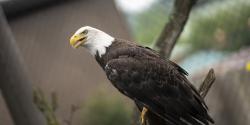At approximately 25 pounds, the red-crowned crane is one of the world’s largest cranes — and one of the rarest.
Due to habitat loss and other threats, researchers estimate that only approximately 2,000 to 2,700 red-crowned cranes are left throughout their native ranges in East Asia.
The Columbus Zoo supports the International Crane Foundation in its efforts to improve the future of this vulnerable species.
Scientific Name: Grus japonensis
Conservation Status: Vulnerable
Size: Their wingspan can reach up to eight feet, and they can grow to 5 feet in height.
Weight: 17 to 22 pounds
Median Life Expectancy: 30-40 years









